Blackcastle Estate
See also: Blackcastle House
Blackcastle Estate – Aspects of its History
by Peter Connell
_____________________
A feature of Navan’s history in the three hundred years between 1600 and 1900, when the landlord system shaped much of Irish society, was the fractured nature of land ownership around the town. Different parts of the town fell within different landed estates. These included the Earl of Essex, Lord de Ros, the Duke of Bedford, the Earl of Howth and the Ruxton-Fitzherbert family of Blackcastle. All but the Ruxton-Fitzherberts were absentee so that we know that by the nineteenth century most of the town’s property was managed from London (Essex, Bedford), Dublin (Howth) and Strangford, Co. Down (de Ros). From 1770 onwards, when John Ruxton married Margaret Edgeworth and came to live at Blackcastle and his brother Samuel Fitzherbert took up residence at Swinnerton, the family ran an estate comprising just over 2,000 acres which played an important role in the life of the town.
Based on legal papers deposited in the National Library of Ireland the origins of the estate can be traced back to the 14th century. These documents show a connection between ‘the manor of Blackcastle and Donaghmore’ and the Butler family (Earls of Ormond) dating back to 1339[i]. 1483 we know that William Sherwood, Bishop of Meath, was a tenant of ‘the Earl of Ormonde's manora of Blakecastel and Donaghmore’.[ii]
By 1631 the manor was being leased to Sir Luke Fitzgerald.[iii] At some point prior to 1745 the land came into the hands of the Fitzherberts of Shercock, Co. Cavan. On March 11 of that year William Fitzherbert leased Blackcastle to ‘Thomas MacNamee and Bryan Wood, both of Polboy in the County of Meath, farmers…the manor of Blackcastle and the townlands of Blackcastle and the several denominations together with the mills of Polboy and the kilns together with all the houses, buildings, gardens, orchards and apportunances to the said premises.’ [iv]
The link between the Ruxton and Fitzherbert families has its origin in the marriage of John William Ruxton to Letitia Fitzherbert in about 1742. Letitia’s brothers died so she inherited the Blackcastle estate. The couple had three sons and two daughters. William, the eldest son, inherited the Ruxton family lands at Ardee and Shercock. The second son John inherited the Blackcastle estate and the third son Samuel, who took the name Fitzherbert, inherited a house and lands at Swinnerton. Over the years the Ruxton family of Ardee disputed the legal arrangements whereby the Blackcastle estate passed to the Ruxton-Fitzherbert branch of the family. The dispute is alleged to have rumbled on through the centuries – of which more below.
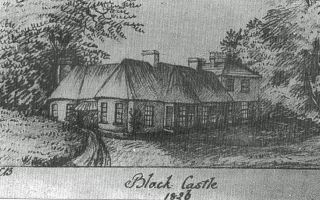
Fig 1 Blackcastle House in 1826 with thatched roof and slated extensions
The marriage of John Ruxton and Margaret Edgeworth, whose father’s estate at Edgeworthstown extended to over 3,000 acres, in 1770 was typical of marriage patterns between families of the landed class in Ireland in the 18th and 19th centuries. In one respect, though, the marriage was not typical – Margaret eloped with John Ruxton. The marriage, it seems, offered her an escape from the attentions of the eccentric author John Day who had been wooing her for a number of years. The couple settled in Blackcastle in about 1772. They had three children who lived into adulthood; Richard born in 1776, Sophia in 1787 and Margaret in 1791.
The house at Blackcastle was an extensive thatched, single-storied building to which John added two wings with slated roofs in 1791 (see Fig 1). In 1794 the whole property was put up for sale as the family intended moving to England. For whatever reason this decision was reversed and John, Margaret and their three children continued to live at Blackcastle until John died aged 80 in 1825.
Most of the estate records that survive for Blackcastle when in the ownership of the Ruxton-Fitzherbert’s relate to the period 1820-1840 although one rental exists for the years 1796-98. [v] Perhaps the most interesting of these records is a survey and map of the estate from 1826 currently in the possession of Trevor Fitzherbert of Swinnerton. 1826 was a significant year in the history of the Blackcastle estate. In the previous year John Ruxton had died and the estate was inherited by his son Richard, who took the name Ruxton-Fitzherbert. John’s brother who lived at Swinnerton died in 1826 and left that part of the estate consisting of about 110 acres to Richard as well. So it is likely that he had this survey carried out as soon as he came into possession of his inheritance. While the survey was being taken Richard is also likely to have been planning the building of the new Blackcastle House marking the handover to a new generation. Completed in 1828, it was a six-bay two-storied building, sadly vandalised in the 1980s and subsequently burned in 1987.
At the bottom of the 1826 map, a survey lists all the tenants on the estate within each townland giving the acreage held by each. It is also possible to identify the holdings of each tenant on the map. One interesting feature of the map is the use of placenames that are no longer officially recognised. In the 1830s a complete mapping of the country was undertaken by the Ordnance Survey. Amongst other things, this involved defining the boundaries of townlands, civil parishes and baronies and standardising the names of townlands. Many placenames that were in common usage did not find their way into the ‘official’ names as defined by the Ordnance Survey. Some continued to live on but others fell into disuse and disappeared. The 1826 map and survey shows a number of these names as listed in table 1.
Name on 1826 map Location
Clooney Part of Clonmagadden
Black Hills Part of Clonmagadden
Sturgeon’s Land Part of Batterstown
Ballinlough Part of Proudstown
Crockanoar Part of Proudstown
Lummorog Part of Proudstown
Mabestown Part of Donaghmore
______________________________________
Table 1 Placenames on 1826 map
The survey on the lower part of the map shows the amount of land held by each tenant. Perhaps the first point of interest regarding the names in the survey is that a number of them are surnames of families who are living in the Navan area almost two hundred years later. These include John, Pat and James Meleady who held 28 acres between them at Donaghmore, Thomas Meleady of Proudstown, Hugh Powderly of Donaghmore, Matthew McGoonagh, also of Donaghmore, James Sherlock of Proudstown, Christopher and Pat Flood of Proudstown. In fact all of these names also appear in the 1796 rental of the estate.
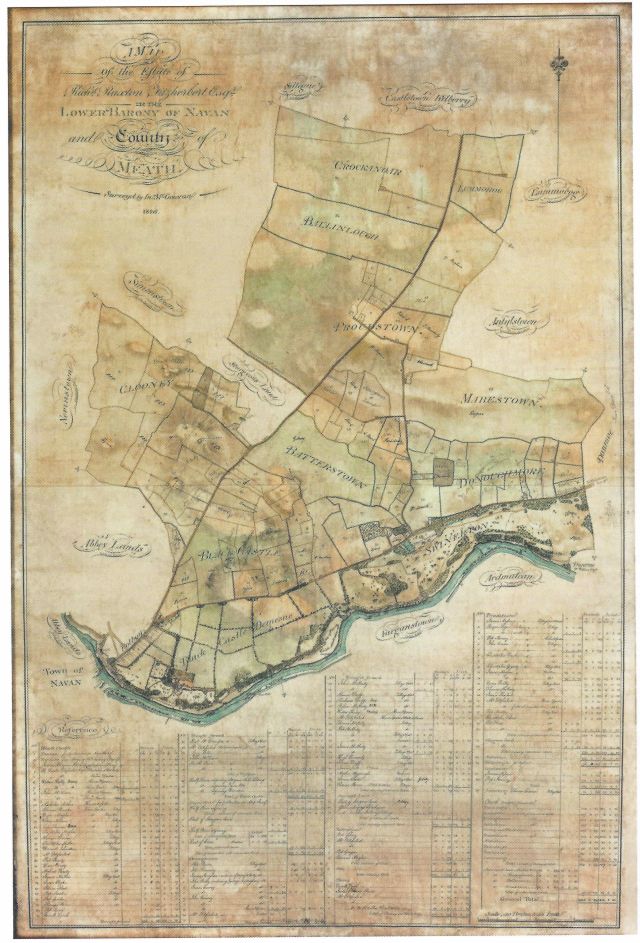
Fig 2 Map and survey of Blackcastle estate, 1826
In terms of continuity between 1796 and 1826 the names listed above are the exception rather than the rule. In other words, there appears to have been a very high turnover of tenants on the estate in the thirty years between 1796 and 1826. This was quite a turbulent time in Irish economic history with a boom in agriculture through the late 1790s and the early years of the nineteenth century which corresponded with Britain being at war with France. Wartime demand for agricultural produce from Ireland led to rising prices and rents. Some tenant farmers did very well from this boom while others found it difficult to pay higher rents as their leases fell in and were forced to give up their holdings.
Land so close to the town of Navan would also have been at a premium and a growing population in the Navan area would also have driven up rents. With the end of the French wars in 1815 there was a collapse in agricultural prices and a recession and this may also be reflected in the disappearance of many tenants from the Blackcastle estate rentroll in the years 1796-1826. Among some of the tenants from 1796 who were no longer on the rentroll in 1826 (and their family names had also disappeared) were Henry Murphy (Blackcastle), Catherine Murray (Blackcastle), Henry McGouish (Blackcastle), Owen Crosbie (Blackcastle), Nicholas Cormick (Donaghmore), Laurence Brien (Proudstown), Edward Gargain (Proudstown) and Owen Swift (Lummorog).
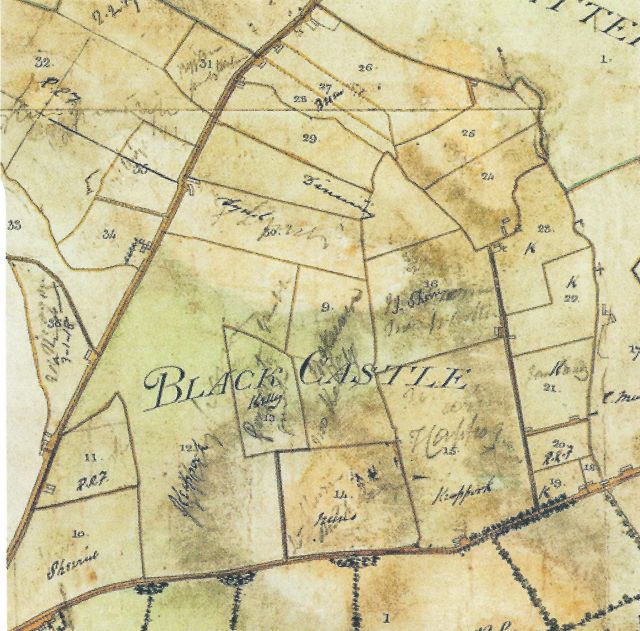
Fig 3 The townland of Blackcastle from the 1826 map
In all, apart from the houses and gardens along Pollboy (or Flower Hill) and the land held by Richard Ruxton Fitzherbert himself, there are 73 separate farms or holdings listed. By far the largest tenant was James Alymer who held 255 acres at Proudstown, followed by James Morgan (of Morgan’s mill) who held 88 acres, also at Proudstown. The vast majority of holdings were small, with forty tenants holding between one and ten acres and another fifteen holding between ten and twenty acres. Close to the town, in the townland of Blackcastle, almost all the holdings were small and there is evidence that some of the farms had been sub-divided between families in the preceding years. For example, there were three adjoining farms occupied by Pat Brady, the widow Brady and Michael Brady just off the Slane Road. The combined area of the three farms was just over ten acres. Some landlords tolerated subdivision of holdings in the early nineteenth century but as farms got progressively smaller and less viable most banned the practice from about 1815 onwards.
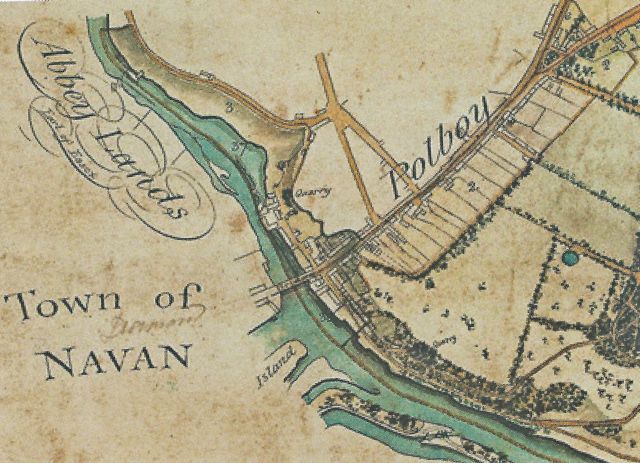
Fig 4 Detail from the 1826 map showing Polboy (Flower Hill)
This map and survey appears to provide a good picture of the northern end of the town on Navan in the 1820s. However, it is important that we don’t view our history through just one source. Landed estate records, such as the map and survey we have just been examining, were produced at the behest of landlords as part of the business of managing land. They provide a particular perspective and particular kinds of information but they may not tell the complete story. And this is the case with our 1826 map.
Five years earlier, in 1821, the first comprehensive census was taken in Ireland as described in Bernadette Murray’s article on Ardsallagh in this publication.[vi] A census has one distinctive advantage over an estate rental or survey in that everyone is recorded in a particular area, not just those who have a commercial relationship with the landlord. Comparing the information in the 1826 Blackcastle estate survey and the 1821 census for the same area reveals dozens of households living on the estate who were not recorded in the landlord’s records and were, therefore, not his direct tenants. Perhaps the best example of this is the townland of Donaghmore.
According to the estate records of 1826 Richard Ruxton Fitzherbert had 21 tenants on the townland of Donaghmore (including Mabestown). Apart from the Mabestown farm which was held by a tenant called Rogers, all were relatively small farmers with James Conway having the largest holding with 18 acres, followed by Robin Meleady with 16 acres, Thomas Sheerin with 15 acres and John Conway with 13. All the other tenants held 10 acres or less. When we examine the 1821 census returns, however, a completely different picture emerges. As well as the twenty or so tenants holding land from Richard Ruxton Fitzherbert, the census records a whole host of landless families living in the townland. These include twenty households where the head of household was recorded as a labourer and a further sixteen where he (for they were all men) was a linen weaver. There are also households headed by a shoemaker, a basket maker, a haggler, a flax spinner, a herd and a slater. In all the census records 75 households living in Donaghmore, over three times the number of tenants recorded in the Blackcastle survey.
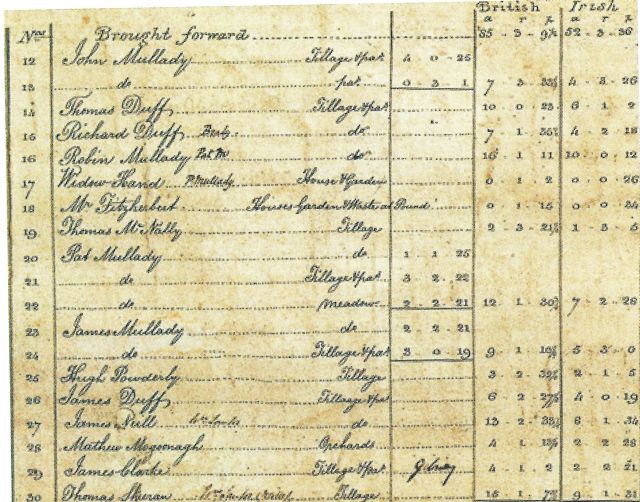
Fig. 5 Part of the list of tenants in Donaghmore from the 1826 survey.
This settlement pattern, with farmers being outnumbered by landless households, was typical of much of the countryside around Navan in the decades before the Famine. Demand was high for small plots of land on which to throw up an elementary cabin and grow potatoes. Small farmers with less than ten acres of land were in a precarious economic position and had a lot to gain by subletting half or quarter acre plots of ground to landless labourers. These plots were rented on a yearly basis for as much as £6 to £8 a year which was a considerable sum given that a small farming family typically lived on less than £25 a year. Subletting of holdings regularly took place on estates where the landlord was an absentee and management of the property was lax.
As resident landlords the Ruxton-Fitzherberts would obviously have been aware that subletting was occurring on their property at Donaghmore as the townland adjoined the estate demesne on the other side of the Slane Road. One factor that may have persuaded the landlord to acquiesce in the practice of subletting is that Donaghmore had a high concentration of linen weavers and by allowing them settle in the area it offered encouragement to the linen industry. Some tenants such as John Conway, who leased a 13 acre farm from Ruxton-Fitzherbert, employed two journeymen weavers who lived with the family as shown in the record of this household from the 1821 census in table 2.
__________________________________________________________
John Conway 40 Farmer and linen weaver
Jane Conway wife 38
Thomas Cormack 51 Journeyman weaver
Richard Conway brother 45 Labourer
Michael Townley 70 Journeyman weaver
Catherine Heery 22 House servant
Ellen Conway niece 12
__________________________________________________________
Table 2 Conway household as recorded in the 1821 census
By the early 1820s the linen industry, both weaving and spinning, was in serious decline. In fact 1826 was a key year in the history of the industry outside Ulster with a deep recession in the British economy and a collapse in the price of both cotton and linen. Average weekly earnings from weaving in the Meath-Louth area fell by 40 percent between 1820 and 1834 and by the onset of the Famine in 1845 the linen industry in Donaghmore is likely to have disappeared. The precarious position of many of the families living in Donaghmore in 1826, particularly those who were not direct tenants on the Ruxton-Fitzherbert estate, is shown by the dramatic decline in the population of the townland during the Famine years. According to the 1841 census there were 278 people living in the townland, by 1851 this had fallen to just 129 representing one of the biggest losses of population in the Navan area.
At the other end of the social spectrum the 1821 census also records the Ruxton-Fitzherbert household shown in Table 3. The old couple, John and Margaret, still head the household. John was to die four years later in 1825 and was succeeded by his son Richard. Richard married Elizabeth Selina Staples from Dunmore in Co. Laois in 1805 but they had no children. Neither of Richard’s sisters, Sophia or Margaret married. Apart from the servants, two other residents of the household are worth noting. The young child, Thomas Rothwell, a grand nephew of John Ruxton, was adopted by Richard and Sophia when both his parents died young in 1817. He changed his name to Fitzherbert in 1863, succeeded to the estate and it is from his marriage to Frances Vesey in 1838 that the Fitzherberts of Blackcastle and Swinnerton of the later 19th and 20th centuries are descended. Sophia Edgeworth, described as a visitor, was a niece of Margaret Ruxton and a sister of the famous author and novelist Maria Edgeworth. Both nieces were regular visitors to Blackcastle.
Name Status Age Occupation
John Ruxton 75 Gentleman
Margaret Ruxton His wife 75
Richard Ruxton His son 45
Elizabeth Ruxton daughter in law 35
Sophia Ruxton daughter 34
Margaret Ruxton daughter 30
Thomas Rothwell Grand nephew 6
Sophia Edgeworth Visitor 17
John Taylor 19 House servant
May Coffey 58 House keeper
Susan Kelly 54 Cook
Bridget Caragan 22 Kitchen maid
Table 3 Ruxton-Fitzherbert household as recorded in the 1821 census
The census shows that the family employed eight live-in servants including a child’s maid who looked after the young Thomas Rothwell. But this was only part of the large number of employees who found work on the estate. The scale of this employment can be gauged from surviving account books for the estate for the years 1827-35. For example, during the summer of 1828 £305-17s-10d was paid out in wages to ‘labourers and tradesmen and other for different works’ [vii]. On average about £1000 a year was paid out to workers on the estate which works out at an equivalent of 60-80 labourers employed on a fulltime basis. Of course many of these would have been employed on a daily or weekly basis with a particular peak during harvesting in the early autumn.
Table 4 reproduces some entries from the estate account books for the years 1827 to 1838 and these give some indication of how important the estate was to the business life of the town of Navan. Apart from employing servants and labourers the estate also generated an income for tenants such as Michael McGoona and John Conway in supplying lime. Others, such as Pat Reilly and Garrett Reilly, provided occasional services such as the carriage of goods and butchering livestock.
The final entry in the table shows that just over £4000 was received in rent for the 18 month period from mid 1836 to the end of 1837, corresponding to an annual rental of £2700 a year. Although this may seem a large sum in the context of the wages of 10d a day paid to labourers at the time it was a modest rental relative to many of Co. Meath’s landed estates in the nineteenth century. This rental income was supplemented by profits made from the demesne farm and other untenanted land on the estate. For example, £132-11s-10d was received for cattle sold in the second half of 1827 and a further £313-16s-0d was received for the grazing of 103 cows at Blackcastle and Clonmagadden. In all, annual expenditure averaged £3700 a year in the late 1820s and early 1830s meaning that a gap of about £1000 had to be bridged between this figure and rental income of £2700 to break even.
____________________________________________________________
7 Nov 1827 Matthew Bellew for sheepwash 9s-0d
27 Mar 1827 Michael McGoona barrels of lime £75-11s-7½d
29 Jun 1827 Subscription to poor of Navan £10
21 Dec 1830 Pat Reilly for carriage of several
Goods from Dublin - 4s-6d
21 Dec 1830 Garrett Reilly for killing 2 pigs and a cow - 6s-8d
9 Sept 1831 Mr. Delaney 2 stone of wheaten meal - 8s-8d
13 Sept 1831 John Conway 1133 barrels of lime £42-9s-9d
6 Oct 1831 Owen Flanagan for 12250 bricks £23-5s-6d
17 June 1834 James Brady paint 1s-1d
4 July 1834 James Halpin for beehives 11s-4d
22 July 1834 Peter McCormack, sweep, 3 months wages 10s-6d
20 Feb 1838 Received rent May to Jan 1838 £4035-1s-8d
____________________________________________________________
Table 4 Entries from estate accounts 1827-38
In the course of our brief history of the estate at Blackcastle based around the 1826 map and survey three surnames have formed part of the story – Ruxton, Fitzherbert and Rothwell. As referred to earlier the Ruxtons from Co. Cavan disputed the fact that the Blackcastle estate passed to the Ruxton-Fitzherberts (and ultimately the Fitzherbert’s) through Letitia Fitzherbert back in the 1740s. According to the diary of Thomas (Rothwell) Fitzherbert from the 1840s the Ruxtons believed that a flaw in the deeds of the property meant that by entering the estate on June 29th of any year the Ruxtons could establish their claim. [viii] In an article published in 1996 on the history of the Ruxton family, William Ruxton reported that all gates to the estate were closed at midnight on the 28th and
‘from dusk to dawn four large bonfires were lit outside the main gateways on all the roadways leading to Black Castle. This was generally known as 'the bonfire night' and all the men in the district would stand guard, whilst consuming quantities of porter which was supplied to them. Some elderly people in Navan remember this custom, which was continued annually until Bertie Fitzherbert's death in 1939.’ [ix]
In the 1821 census Sophia Edgeworth is recorded as a visitor to Blackcastle. Her sister, the eminent novelist Maria, was a very regular visitor and a regular correspondent with her aunt Margaret Ruxton and her first cousins Sophia and Margaret. Her letters to Blackcastle contain society gossip of the time such as reports of engagements and marriages as well accounts of her travels, books read and authors met. Maria’s father died in June 1817 and her correspondence shows that she spent October 1817 to January 1818 at Blackcastle grieving her loss in the company of her aunt and cousins. She was a visitor again in late 1821 (the census was taken during the summer of that year) and the following extract from a letter she wrote home to her mother in Edgeworthstown provides a flavour of her correspondence:
'How do you all do, my dear friends, after last night's hurricane? Have any trees been blown away? Has the spire stood? Is Madgy Woods alive? How many roofs of houses in the town have been blown away, and how many hundred slates and panes of glass must be replaced? The glass dome over the staircase at Ardbraccan has been blown away; two of the saloon windows blown in. The servants in this house sat up all night; I slept soundly. My aunt, roused at an unwonted hour from her bed this morning, stood at the foot of mine while I was yet dreaming; and she avers that when she told me that eight trees and the great green gates were blown down, that I sat up in my bed, and, opening one eye, answered, "Is it in the newspaper, ma'am?" When I came out to breakfast, the first object I beheld was the uprooted elms lying prostrate opposite the breakfast-room windows; and Mr. Fitzherbert says more than a hundred are blown down in the uplands.' [x]
After John Ruxton died in 1825 Maria spent four months at Blackcastle the following year and may have been visiting the house when the 1826 map was being drawn. She was particularly affected by the death of her aunt Margaret at Blackcastle in November 1830 as Maria was in London at the time and had not been to Blackcastle since August, before her aunt became ill. In 1834 her cousins Sophia and Margaret took up residence at Dunmoe cottage and Maria wrote to congratulate them:
'With all my heart I congratulate you on being in possession of your cottage. Harriet Butler told us how happy the people of Black Castle and Navan were, when they heard you were coming to live amongst them again. You are now as busy as possible arranging your things and considering how all and each of your friends will like what you do, and I am—very conceited—sure that you often think of Maria among the number, and that you have even already thought of a footstool for her.' [xi]
Maria was particularly close to her cousin Sophia as is evident from this letter of September 1836:
'You may suppose how I felt the kindness of your note. You are now my friend of longest standing and dearest parentage in this world; and in this world, in which I have lived nearly three quarters of a century, I have found nothing one quarter so well worth living for as old friends.' [xii]
A year later Sophia died, aged 50. Maria continued her correspondence with her cousin Margaret until shortly before her death in 1849, aged 83. Her love of Blackcastle is best expressed in a poem of that name written in 1811:
Blackcastle
Would you see Blackcastle aright
Then go by day and go by night
Go when the sun’s reflected beams
Spread o’er the Boyne in silver streams.
When light and shade successive skim
Along the weir’s indented brim
Go when the rose and eglantine
To deck the cottage walls combine.
When summer leads the months along
That bid the birds renew their song
Then returning soothly say
Blackcastle surely charms by day.
But when the wintry clouds appear
When storms and snow deface the year
When the brief days at eve retire
And friends surround the cottage fire.
When frequent billets feed the blaze
And frequent tapers spread their rays
When wit and humour mixed with sense
Without ill nature or pretence
With all the charms of polished ease
And with the wish the power to please
At night enliven every hour
You pass in that enchanting bower.
Then say Blackcastle must delight
When seen by day or seen by night.[xiii]
June 8th 1811
Article above originally published in Navan - Its People and Its Past vol.1 (2011) Journal of the N&HS.
[i] Grant by Sir Walter de Mandevill to his son Thomas of the manors of Donaghmore, Blackcastle (Co. Meath), and Clonsangan, March, 1339 (NLI, D. 823)
[ii] Account of William Sherwood, Bp. of Meath as farmer of the Earl of Ormonde's manora of Blakecastel and Donaghmore, Co. Meath, 1483.(London, PRO S.C. 6/1237/7)
[iii] Lease by the Earl of Ormonde to Sir Luke Fitzgerald of the lands of Blackcastle and Donaghmore, Co. Meath, June 29, 1631 (NLI, D. 3804)
[iv] Papers relating to the family of Ruxton or Ruxton Fitzherbert, of Blackcastle, Co. Meath (NLI, MS8987)
[v] Ibid.
[vi] Census of Ireland 1821, (NA p.403)
[vii] Account books of the estate of R. R. Fitzherbert of Black Castle, Co. Meath, (NLI, MS4117)
[viii] Diary of Thomas Fitzherbert of Black Castle, Co. Meath (NLI, MS 3270)
[ix] William Ruxton, ‘The Ruxtons of Ardee’ in Journal of the County Louth Archaeological and Historical Society, Vol. 23, No. 4(1996), pp. 387-392
[x] Edgeworth Papers (NLI, MS25506)
[xi] Ibid
[xii] Ibid.
[xiii] Edgeworth Papers (NLI, MS 23505)